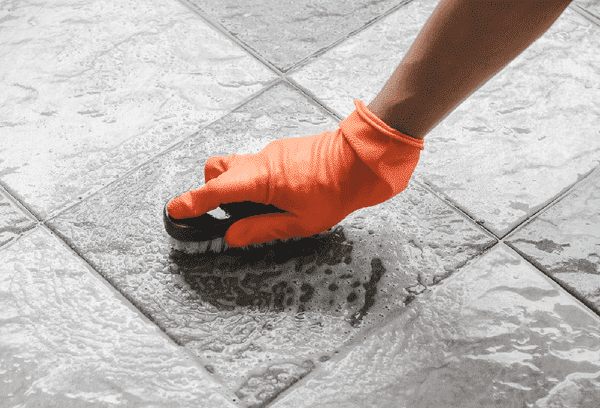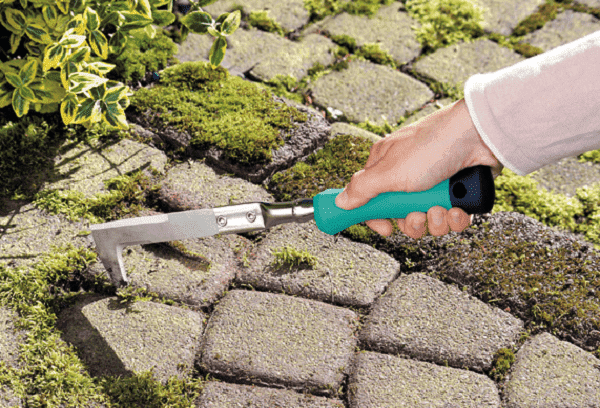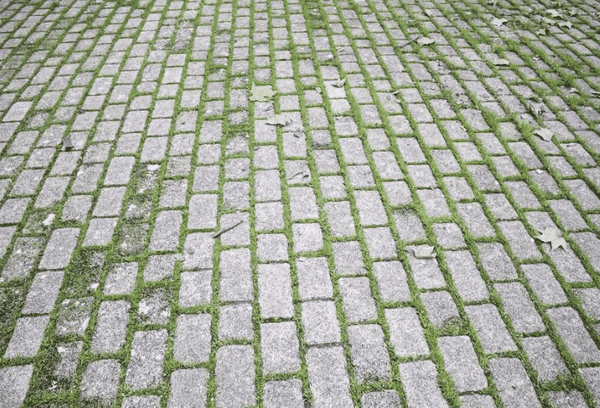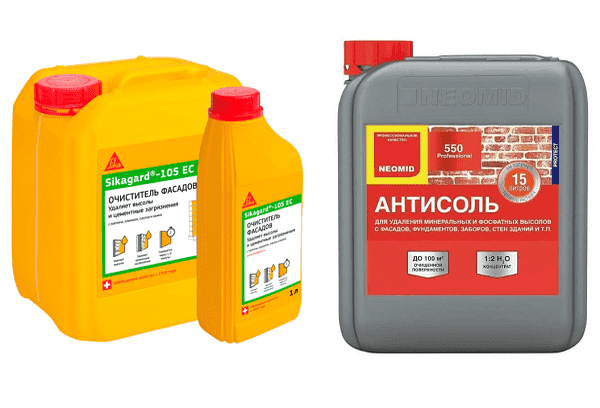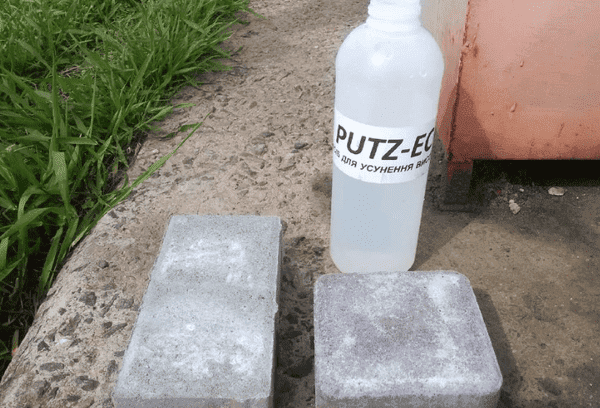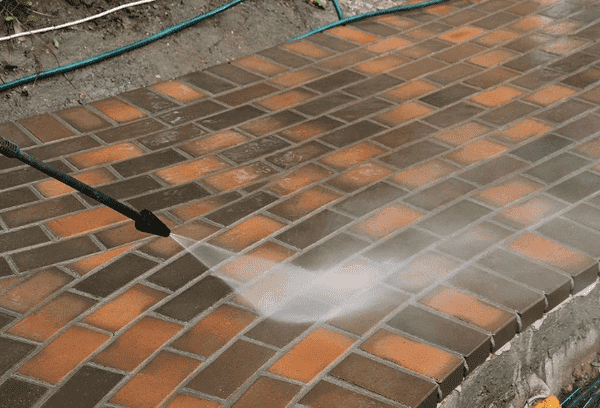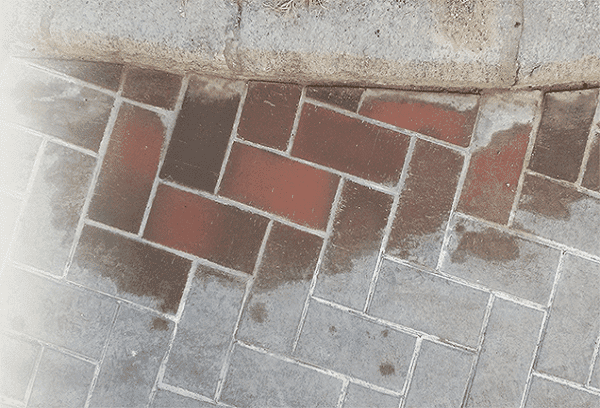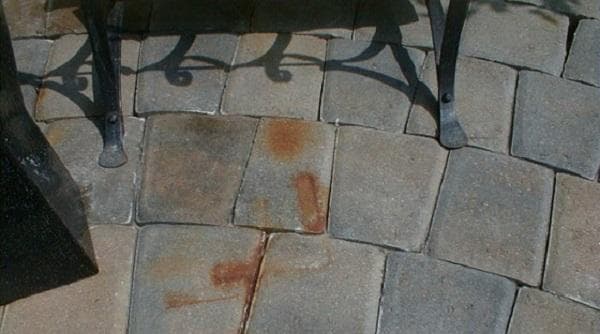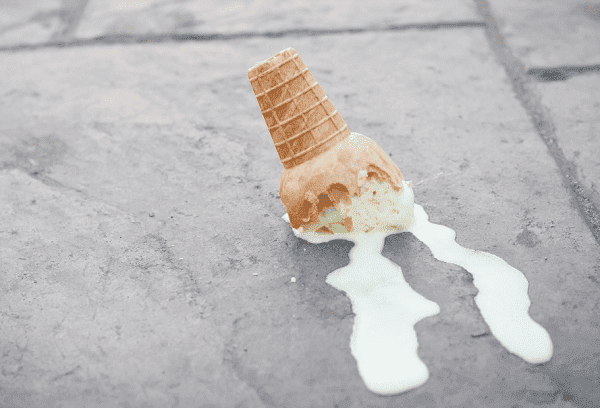How to renew paving slabs and how to quickly clean them from dirt and sand
Content:
In order to properly clean paving slabs, it is necessary to find out the nature of the contamination. This is easy to determine visually. Each specific case will require its own method of cleansing. For light stains, you can get by with simple cleaning using a brush and water. Difficult to remove stains will have to be removed using chemical compounds. To maintain cleanliness, you should regularly clean the paving stones without letting them get into a state of disrepair.
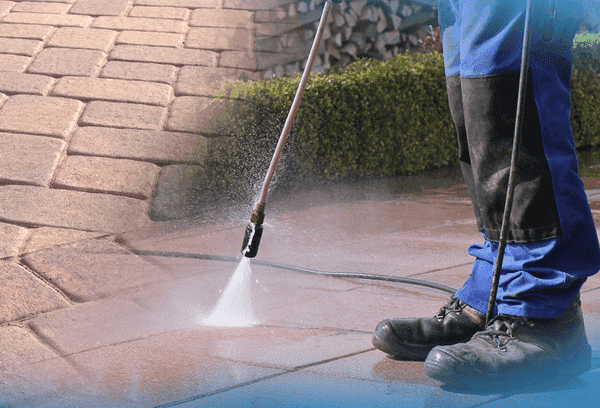
Types of cleaning
Methods for cleaning paving stones are divided into several types depending on the method of exposure. The method you choose depends on the time of year:
- Mechanical cleaning is usually used in winter to remove ice and fallen snow. For this purpose, wooden shovels, scrapers, and spatulas are used.
- Chemical cleaning is allowed only with the use of specialized products that cannot damage the coating itself. The composition must be applied to damp tiles. If the product is aggressive, it is better to try it first on an inconspicuous area.
- Wet and dry cleaning is carried out with a polymer brush. The pressure of the water jet must be adjusted.Too much pressure can cause chips and damage to the tiles.
- Thermal cleaning involves the method of exposure to hot steam. Sometimes contaminants are removed using an open flame, for example, using a gas burner. This must be done with caution; strong heating can lead to damage to the coating.
In winter, paving stones become fragile, so you should not use tools with a metal edge.
In the summer, it is necessary to remove complex stains in a timely manner; when fresh, any stains can be removed faster and easier. If a polluting liquid spills, it is better not to rub it with a rag, but to cover it with an adsorbent. For this purpose, you can use sand, sawdust, or cat litter. The particles that have absorbed the liquid are then swept away with a broom or broom.
How often should paving slabs be cleaned?
Without maintenance, paving slabs quickly lose their attractive appearance. It is advisable not to wait until the coating is in a deplorable state, but to carry out cleaning as soon as individual dirt appears:
- To begin with, you can try to wash off the dirt from the hose with a strong stream of water. This is the easiest and fastest cleaning method, but it is not always effective.
- A more reliable method involves using a polymer brush and soapy water. It is better to use dishwashing detergent; it can easily cope with ordinary dirt.
- If the result is unsatisfactory, you will need to find out the nature of the contamination and use special equipment.
Twice a year (in spring and mid-summer), the paving stone manufacturer suggests doing a thorough cleaning to keep the pavement looking fresh longer.At the same time, individual cracked tiles are replaced and sand is poured into the cracks, if necessary.
Weeds, moss, lichens
If weeds have grown between the tiles, remove them by hand or using garden tools. Metal tools should be used carefully so as not to damage the paving stones themselves. Typically, vegetation is cut with scissors as close to the roots as possible.
Aggressive, difficult-to-remove weeds are treated with herbicide, and then the tiles are washed with clean water (after a few hours). Opponents of chemistry can pour boiling water into the cracks.
Moss grown on the tiles is removed mechanically using a spatula or scraper. To prevent the appearance of mosses and lichens, the tiles are treated with a solution of iron and ammonium sulfate. The same composition will help protect the tiles from mold.
Removing complex stains
The fight against difficult stains depends on their origin. Most often, paving stones in this case are washed with chemical compounds. Bright paving slabs require especially careful handling, as the color may fade due to exposure to chemicals.
Whitish spots (efflorescence)
Efflorescence can appear on the tiles due to improper storage even before installation in conditions of high humidity. The cause may also be chemical compounds contained in precipitation, for example, if an enterprise or roadway is located nearby.
Another factor is incorrect installation technology. It is necessary to remove whitish spots not only for aesthetic reasons. During the cold season, the chemicals that make up efflorescence (sulfates and carbonates) absorb moisture, which causes cracks and pits to appear on the tiles.The problem can be solved with the help of special drugs:
- "Antisol" Neomid 550;
- "Guardian" EC-22;
- Sikagard S;
- PUTZ-EC.
These remedies are effective even if the salt deposits are old. After purchase, the anti-salt concentrate is diluted with water according to the instructions and applied to the stains in any convenient way (roller, brush, spray). After half an hour, the tiles should be washed with clean water using a brush.
Then the surface should dry thoroughly. For this reason, work is carried out in hot sunny weather. If the desired result is not obtained the first time, the procedure is repeated. After cleaning, the tiles are impregnated with a deep penetration water repellent. The composition must be applied to the entire tile covering, and not in places. In this case, protection against efflorescence is guaranteed for the next 10 years.
Any fat, technical oil
If vegetable or motor oil, lighter fluid, or lubricants have been spilled on the paving stones, you should try to clean the tiles immediately before the greasy substance penetrates into the structure of the coating. Dishwashing detergent or household stain remover are suitable for this purpose.
The composition is applied to the stain in a thick layer. After a few minutes, the paving stones are washed with water under high pressure. For maximum grease removal, you can first sprinkle the dirt with sand, which will absorb the oil. This will make it easier to clean the tiles.
If the stain remains, use special stain removers for oil, using them in accordance with the instructions. The market also offers special restorative compounds that will help restore tiles to their original color after aggressive exposure.
Cement mortar
During renovation work, the tiles may become contaminated with cement. The choice of cleaning method depends on the degree of contamination:
- Scattered layers in the form of frozen drops are removed with a hammer and chisel. You must act carefully so as not to damage the outside of the paving stones.
- It is advisable to treat stubborn cement and large contaminated areas with a sandblaster.
- Another option is to use a grinding machine with special discs. Such equipment allows you to complete the job in a short time without much effort.
Special compounds based on orthophosphoric acid will also help remove traces of cement mortar. The product is applied to the paving stones using a soft brush, after which a neutralizer (soda, lime or ammonia) is used. After a few minutes, the coating is washed with plenty of clean water.
Tire tracks
Tread marks make paving slabs unsightly and create a feeling of uncleanliness. Sometimes such marks are left on paving stones by rubber heels used to protect shoes.
Cleaning methods:
- You can try to wash rubber stains by hand using a concentrated detergent solution and a brush with short, stiff bristles. Dirty water is collected with a sponge, making blotting movements.
- A steam generator will do this job perfectly. Under the influence of high temperature and moisture, contaminants will come to the surface, after which all that remains is to carefully remove them by collecting them with a damp cloth.
- Traces of rubber can be easily removed by rubbing the stained area with gasoline, alcohol or solvent. After treatment, wipe the area with a sponge soaked in soapy water and then with a dry cloth.
Do not use scrapers or sandpaper to remove rubber marks. The particles of this material are elastic and, when pressed, penetrate even deeper into the pores of the paving stones.
Rust stains, paint
Rust can appear on tiles as a result of prolonged contact with metal. In these situations, the composition "MS-Rost EX" is used. Since the components included in the product have a destructive effect on concrete, immediately after using the cleaner, its residues are washed off with plenty of water.
Oil and acrylic paints are wiped off with white spirit or acetone. Traces of water-based paint are removed using warm water and a stiff brush. Solvent-resistant nitro paint is removed by grinding off with an abrasive attachment. You can also use special construction washes. After they are applied, the paint swells and is scraped off.
Other contaminants
There is still a lot of contaminants that spoil the appearance of the tiles, and therefore the appearance of the site. Among them:
- Mold. The fungus often forms in places with high humidity and shade. It is imperative to combat mold; it is not at all difficult to do. You can wash contaminated areas with regular bleach or chlorine. If there are concerns about the preservation of the pigment in the tile, treatment is carried out with a special anti-mold compound, sold in any hardware store. After 10 minutes, wash off the product with a stream of water from a hose.
- Chewing gum. Such marks are removed using a spatula. If the gum has softened in the sun, first apply an ice cube to it. After the gum hardens, it is scraped off.
- Soot. This type of dirt may end up on the paving stones if there is a barbecue area nearby.Until the contamination penetrates deep into the pores, it is removed with a solution of special liquid soap for paving slabs. You should use well-heated water for cleaning.
- Traces of food. Protein foods can also leave permanent stains. In this case, the surface is treated with alcohol, kerosene, and gasoline. The used solution must be carefully collected with a soft cloth.
It is worth washing off dirt from paving slabs even if at first glance they seem clean. Unnoticeable stains or microscopic particles of mold can begin to destroy the coating, which will lead to large-scale problems in the future.
To begin with, you should use a simple cleaning option using water and detergent. If necessary, additional attention is paid to the remaining stains after washing in order to completely get rid of them.
